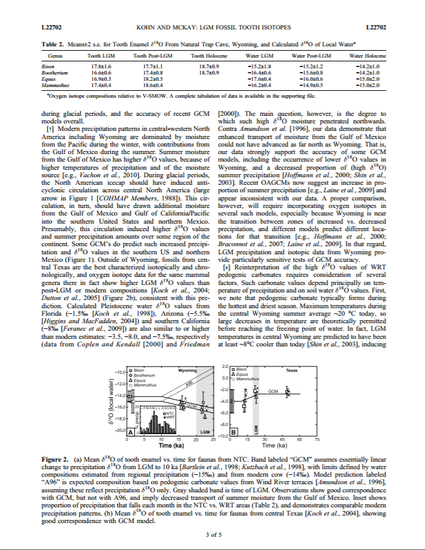
Oxygen isotope data provide a key test of general circulation models (GCMs) for the Last Glacial Maximum (LGM) in North America, which have otherwise proved difficult to validate. High δ18O pedogenic carbonates in central Wyoming have been interpreted to indicate increased summer precipitation sourced from the Gulf of Mexico. Here we show that tooth enamel δ18O of large mammals, which is strongly correlated with local water and precipitation δ18O, is lower during the LGM in Wyoming, not higher. Similar data from Texas, California, Florida and Arizona indicate higher δ18O values than in the Holocene, which is also predicted by GCMs. Tooth enamel data closely validate some recent models of atmospheric circulation and precipitation δ18O, including an increase in the proportion of winter precipitation for central North America, and summer precipitation in the southern US, but suggest aridity can bias pedogenic carbonate δ18O values significantly.
Copyright 2010 by the American Geophysical Union. DOI: 10.1029/2010gl045404
Available at: http://works.bepress.com/matthew_kohn/9/
